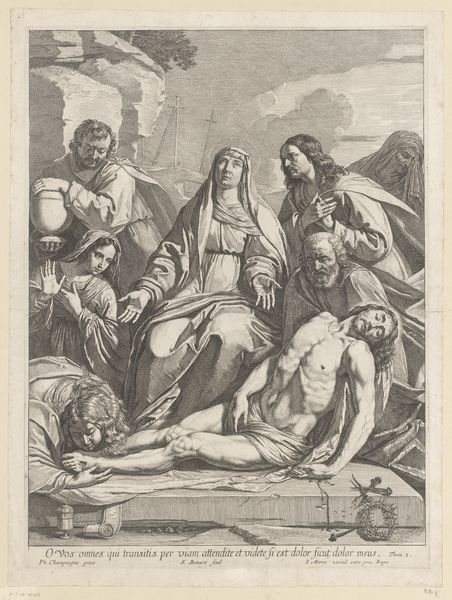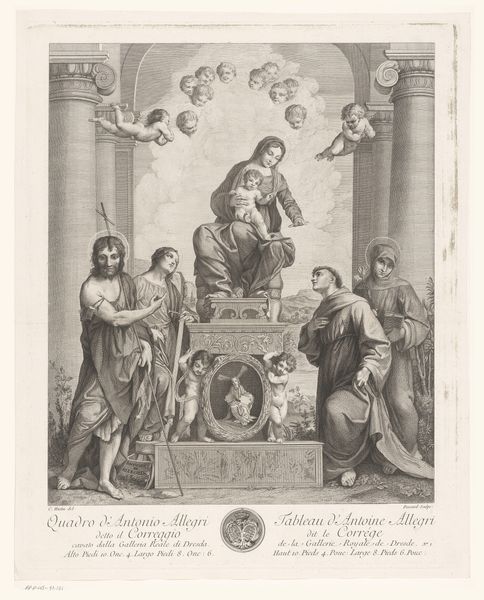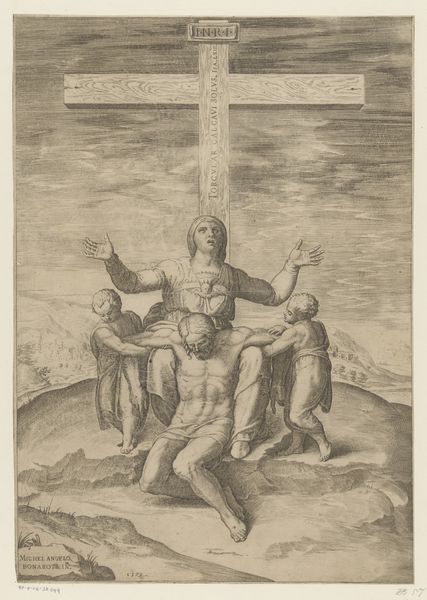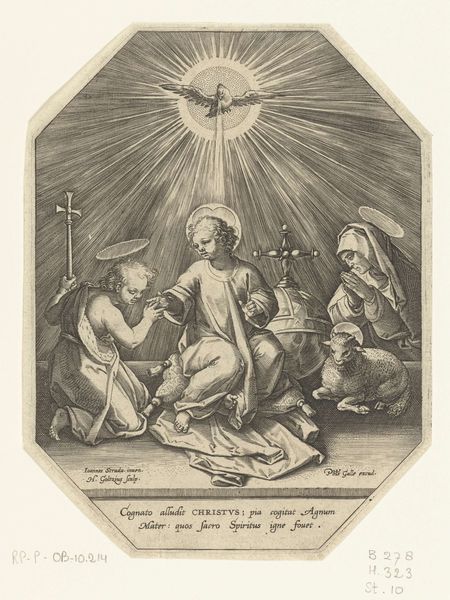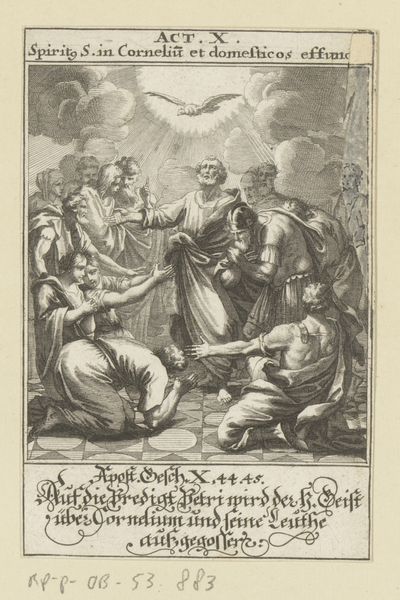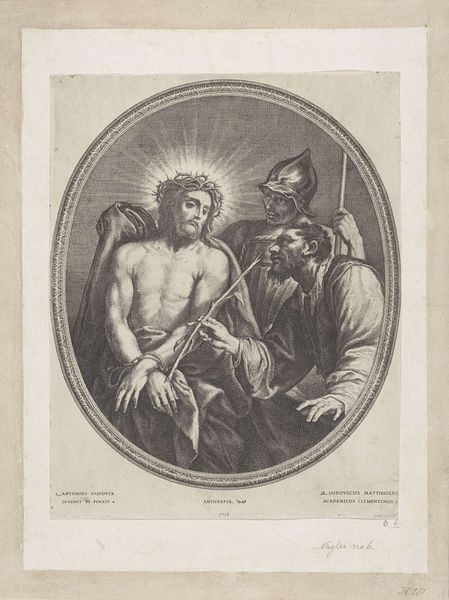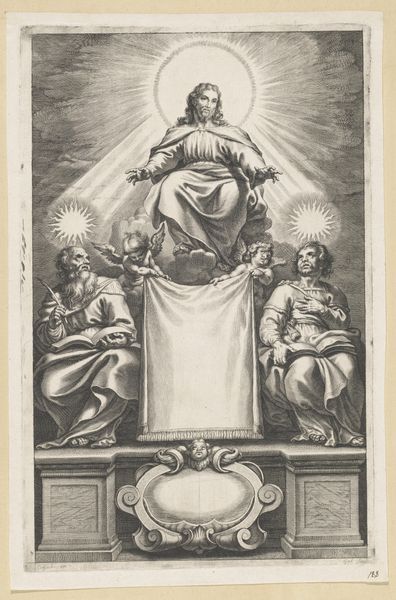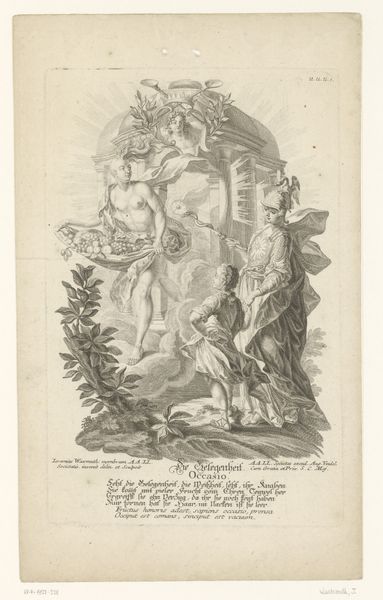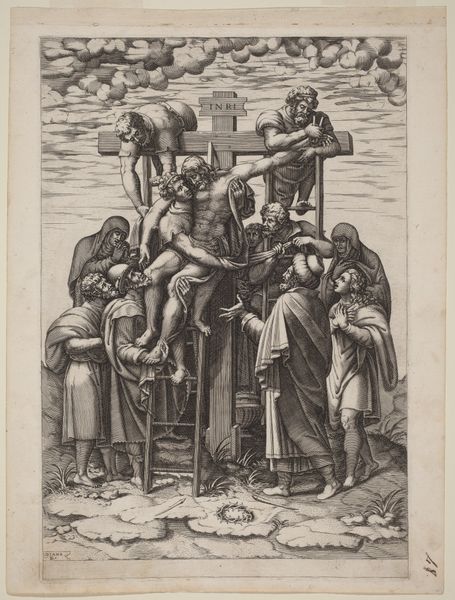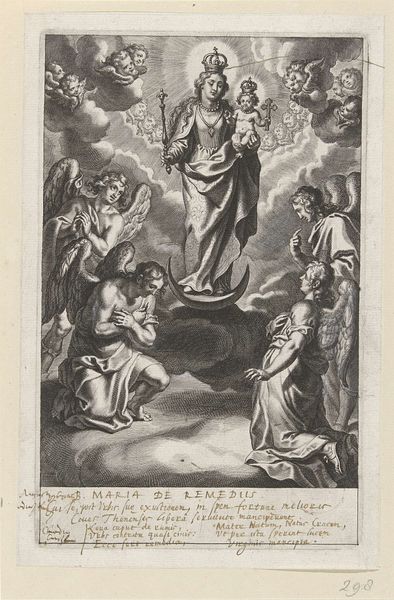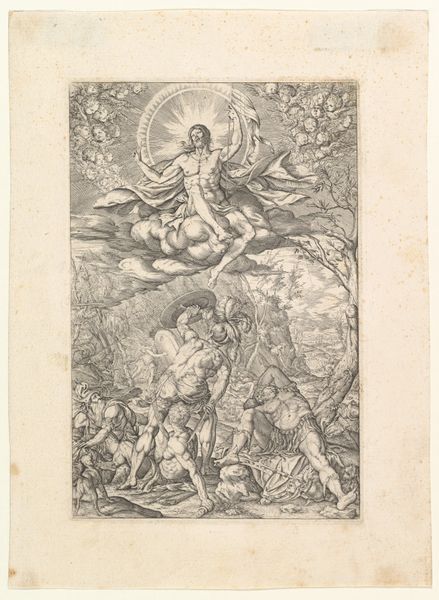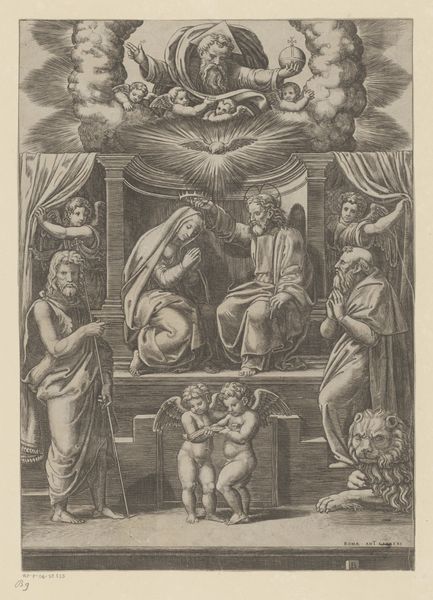
print, engraving
#
portrait
#
baroque
# print
#
figuration
#
pencil drawing
#
history-painting
#
engraving
Dimensions: height 456 mm, width 339 mm
Copyright: Rijks Museum: Open Domain
Lucas Kilian created this print of the Piëta, depicting the Virgin Mary cradling the dead body of Jesus, sometime between 1600 and 1637 in Augsburg, Germany. The image draws from a long tradition of Christian art. But consider the context in which Kilian was working: the Reformation had challenged the authority of the Catholic Church, leading to new forms of religious expression. Prints like this one served a devotional purpose, offering a powerful and emotionally charged image for private contemplation, and were commissioned by members of the church such as Philipp, Bishop of Bamberg and Würzburg whose crest is at the bottom of the work. The composition emphasizes the suffering of Christ and the Virgin Mary, inviting viewers to empathize with their pain. The use of light and shadow creates a dramatic effect, drawing attention to the central figures. To understand the print fully, we might research the religious and political history of Augsburg, as well as the role of printmaking in disseminating religious ideas during the early modern period.
Comments
No comments
Be the first to comment and join the conversation on the ultimate creative platform.
